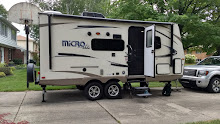









A night’s sleep was wonderfully restorative and we woke up ready to really start exploring. Even better, it was a sunny warm day! We explored the northwest side of the island. We headed north from the villa and saw our first herd of cows walking right through the neighborhood. Further on, after stopping to take pictures of an old aqueduct, we pulled over for a large herd of goats being driven down the road by three shepherds with a truck and a dog. About half were wearing bells and it was quite charmingly noisy. We continued on, climbing higher and higher up the side of an old caldera. We turned into Lagoa(Lake) do Canario Park. We took a short steep hike on a trail lined with azaleas to Miradouro (viewpoint) Lagoa do Canario, one of the best, most stunning views in the Azores, overlooking the twin lakes of Sete Cidades (seven cities). Nearby we hiked down into a ravine leading to a deep, narrow little valley with steep sides and a stream. The area is filled with royal ferns, 30 to 40 feet tall, as well as more azaleas and other endemic plants. Following the winding road up further we stopped at a pinnacle called Vista de Rei (King’s Sight) in honor of a visit there of King Carlos in the early 1900s. From that point we could look down one side to the Sete Cidades and to the other side see the Atlantic Ocean. We descended to the little village of Sete Cidades and ate our picnic lunch of bread, wine, cheese and apples sitting on the shore of Blue Lake. The lost city of Atlantis is linked to Sete Cidades volcano by legendary tales. It also has a charming legend of the lakes being formed by the tears of a princess (Blue Lake) and a shepherd boy (Green Lake) who wanted to marry but were forbidden by her father. Climbing out of the village we made frequent stops at the well marked and very numerous Miradouras, each one a spectacular overlook. We passed through many tiny villages, each with its characteristic white square church outlined with black volcanic stones. The roads are lined with hydrangea, azaleas, Kahil ginger, calla and cannas lilies, nasturtium, and other flowering plants in profusion. We circled around the end of the island stopping at one of the ocean beaches that has warm water because of hot springs that mix with the ocean water but we didn’t join the handful of bathers. We managed to find a restaurant called The White Stallion in Santa Barbara that was recommended in the travel book Kris had brought along, but it wasn’t open either because it was a bit too early or because of winter hours, we couldn’t really tell. Instead we went a bit further and found another recommended restaurant called the Solar do Canto, which is in an old manor house. We were about an hour too early for their dinner time of 7:00 so we wandered around their extensive gardens until we could be served. It’s a very nice restaurant but the four of us were joined by only one other couple for the evening. We had the suggested daily menu and enjoyed a good, local meal which included coffee, wine and water, as well as dessert. When we headed south across the island to return to our villa we were surprised that it was only about 10 miles away on a wide, well lighted road. We got ready for bed soon after returning but Kris blew the power out plugging in a hair dryer for Heidi so he and Marv stayed up a bit longer trying to get it back on, to no avail. We figured we’d call Norberto in the morning and deal with it then.

When we were traveling through West Africa back in the day, we would heat up water for coffee and tea in a pan on top of my upside-down travel iron. That is, until we blow out the power of an entire hotel in Burkina Faso. You have to watch those watts!
ReplyDeletePretty funny!
ReplyDelete